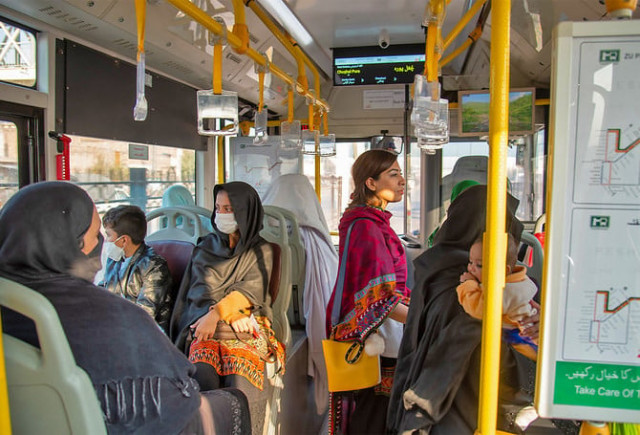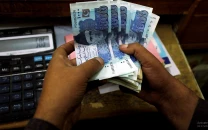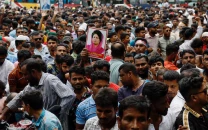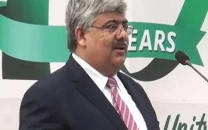The struggling bus industry
Informal sector, preference for imports eat into domestic industry’s share

Buses are vehicles in which everybody can travel – whether rich or poor – but the former usually have their own car or luxury vehicle.
Though many in Pakistan do not have enough purchasing power to buy a car, who may opt for public transport to commute, the production of buses gets little attention in public discourse as compared to passenger cars.
Pakistan’s bus industry has experienced an average market demand for 1,000 to 1,050 buses per annum over the last five years. It is met by five major original equipment manufacturers (OEMs) in the country, which include Yutong-Master, Hino, Isuzu, Daewoo and Mitsubishi Fuso, non-OEMs which are informal roadside vehicle body makers and imported completely built units (CBUs) of buses.
“Buses have the lowest component of locally produced parts compared to other segments of the automobile industry. Both trucks and buses are either only assembled in Pakistan or directly imported in CBU form,” remarked auto industry expert Mashhood Ali Khan.
At present, the share of locally produced parts in buses ranges from 5% to 25% depending on the model and make. One of the biggest factors behind the low share of local parts is the thin production volume in the sector.
In Pakistan, “bus services have evolved from creating a cost-effective mode of transportation to moving as many people as possible in a safe, sustainable and comfortable manner, which is environment-friendly as well,” Khan said.
In Karachi, three to four projects have been initiated in the past two decades with the latest project inaugurated just a few months ago. However, all these projects have failed. “Project unsustainability and the lack of required changes and improvements after implementation are the reasons why transport system in Karachi has failed,” he pointed out.
Karachi has one of the worst public transport systems globally, according to a 2019 study by car parts company Mister Auto that surveyed 100 major cities. The transport system serves about 42% of Karachi’s commuters, relying on decades-old, overcrowded buses that use the roof as a second deck for passengers.
“This is a very sad situation,” Khan remarked, adding that the government would have to come up with an initiative to increase the number of buses on roads. “A new well-thought-out urban transport system may be introduced and implemented simultaneously in all provinces. Auto parts manufacturing industry is on standby for any assistance the government needs to execute such a plan,” Khan said.
“Demand for buses in Pakistan is very low compared to the production capacity of OEMs,” said an official of a local bus assembler that has formed joint venture with a Chinese company. The OEMs are in financial trouble as they could be able to utilise only 20% of their production capacity and are struggling to meet operational costs because of thin demand and low production.
Additionally, the roadside body makers – technically called non-OEMs – take away about 30% of bus demand from the OEMs by quoting significantly low prices as the buses produced by them are substandard and unsafe for travel.
These body makers use 15 to 30-year-old truck/ bus chassis and copy the designs of OEMs. They bring cheap and inferior buses to the market without safety protocols and quality standards.
This poses a great risk to the lives of passengers and the people walking on roads. “The number of accidents caused by these substandard buses is significantly high and we urge the government to intervene,” said the official of the bus assembler.
Under-invoicing
The import of CBUs of buses allegedly through under-invoicing by foreign companies, which have no investment in Pakistan, also eats up a sizeable share of bus demand, which is estimated at about 15%.
Additionally, the import of CBUs exerts pressure on the country’s import bill, hence negatively impacting the economy. Keeping this in view, the OEMs stress they should be supported as they have heavily invested in the country, provide employment to many and ease the pressure on the import bill. “The government needs to support the local industry for bus manufacturing/ assembly,” said an industry official on condition of anonymity.
On the contrary, most of the government projects set out certain requirements, which are discouraging for the industry and encourage the import of CBUs. A recent example is the purchase of buses for the Green Line and Orange Line mass transit projects by the Sindh and federal governments. “Local manufacturers are fully capable of manufacturing/ assembling the buses required by these projects,” the official said.
Earlier, the government rolled out the Auto Industry Development Policy (AIDP) 2016-21, which has been extended for another five years from 2022-26 with the main focus on strengthening local manufacturing and inviting new investment and competition into Pakistan’s auto industry. This has worked to a certain extent for passenger vehicles, however, it did not benefit the commercial truck and bus industry.
In the bus segment, the OEMs are able to utilise only 20% of their production capacity whereas in the passenger vehicle category, the OEMs are running at 100% capacity with vehicle delivery time of more than six months. The auto policy brought new entrants to the passenger vehicle segment with reduced taxes on import of CBUs and CKD (completely knocked down) kits as opposed to the existing players. The new entrants are meeting the growing consumer demand and reducing the vehicle delivery time. However, this is not the case in the bus industry having short delivery time and insufficient demand.
“The auto policy has allowed six new entrants into the market with lower taxes on import of buses, which have taken away the demand from the existing players,” said the official. “This has negatively impacted the bus industry as the players struggle to survive in the face of scarce demand and oversupply.”
This situation is leading to unemployment in the industry while the import of CBUs has increased, resulting in a significant rise in the country’s import bill. In most of the federal and provincial governments’ rapid transit projects, they have opted for the import of CBUs instead of supporting the local manufacturers/ assemblers, which have the capacity and capability to develop buses of international standard with the support of the government, say industry people.
The industry is demanding a separate policy for encouraging the existing market players and helping them become competitive and increase capacity utilisation. For the last five years, the average demand for buses has remained around 1,000 to 1,050 units per year. However, the existing five companies have the combined annual capacity of more than 5,000 buses. Over the last five years, around 900 to 950 units have been produced in Pakistan, which include inter-city, intra-city and shuttle buses. But in the past two years, the average production has remained between 600 and 650 units – a marked slowdown which came due to the impact of the Covid-19 pandemic.
The writer is a staff correspondent
Published in The Express Tribune, May 9th, 2022.
Like Business on Facebook, follow @TribuneBiz on Twitter to stay informed and join in the conversation.



1728020501-0/Express-Tribune-Web-(13)1728020501-0-208x130.webp)







1726134115-0/BeFunk_-(41)1726134115-0-208x130.webp)







COMMENTS
Comments are moderated and generally will be posted if they are on-topic and not abusive.
For more information, please see our Comments FAQ